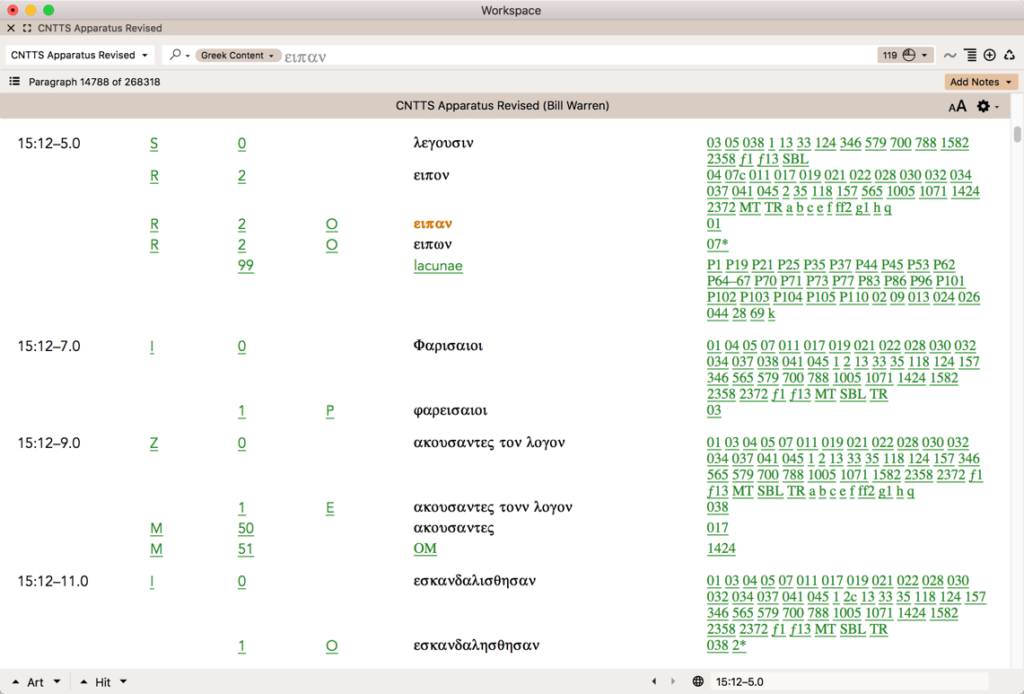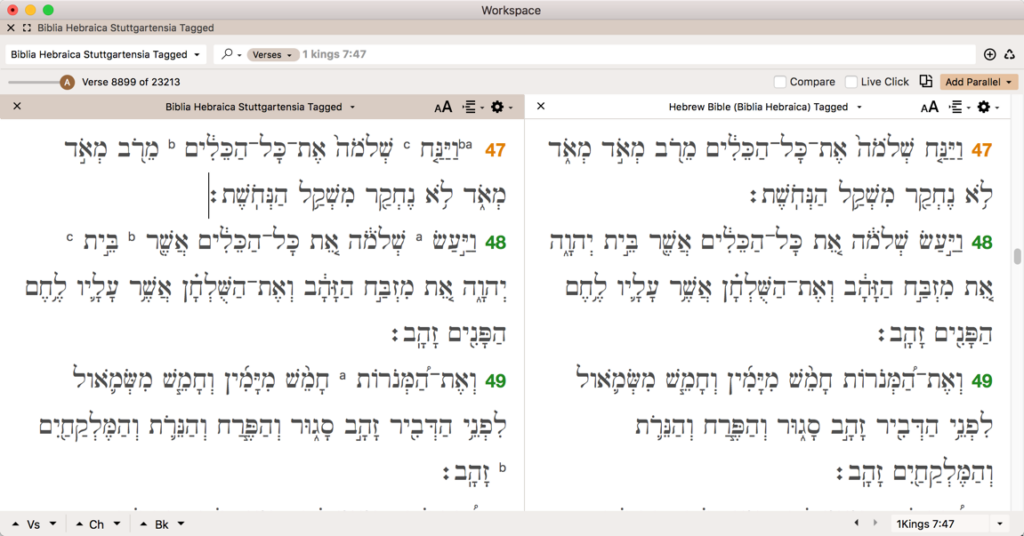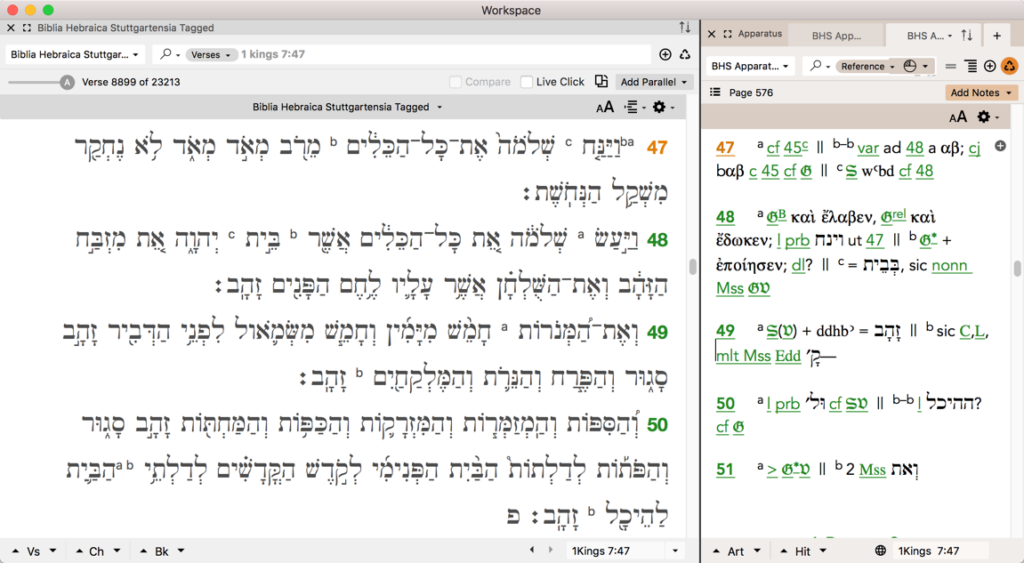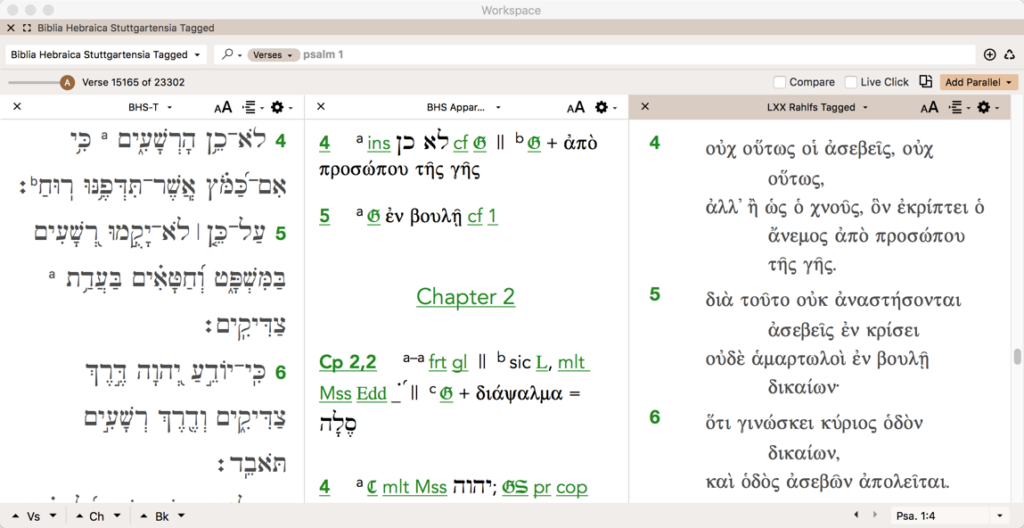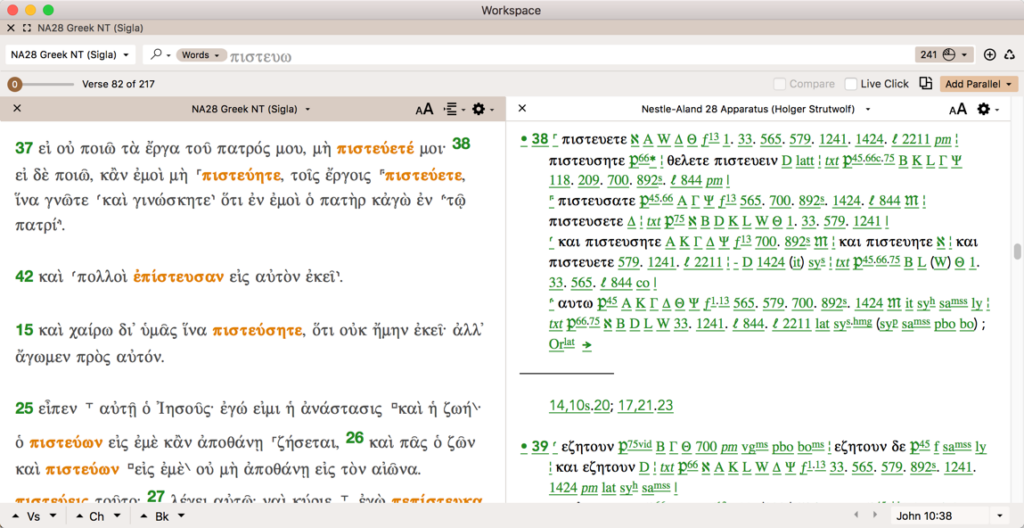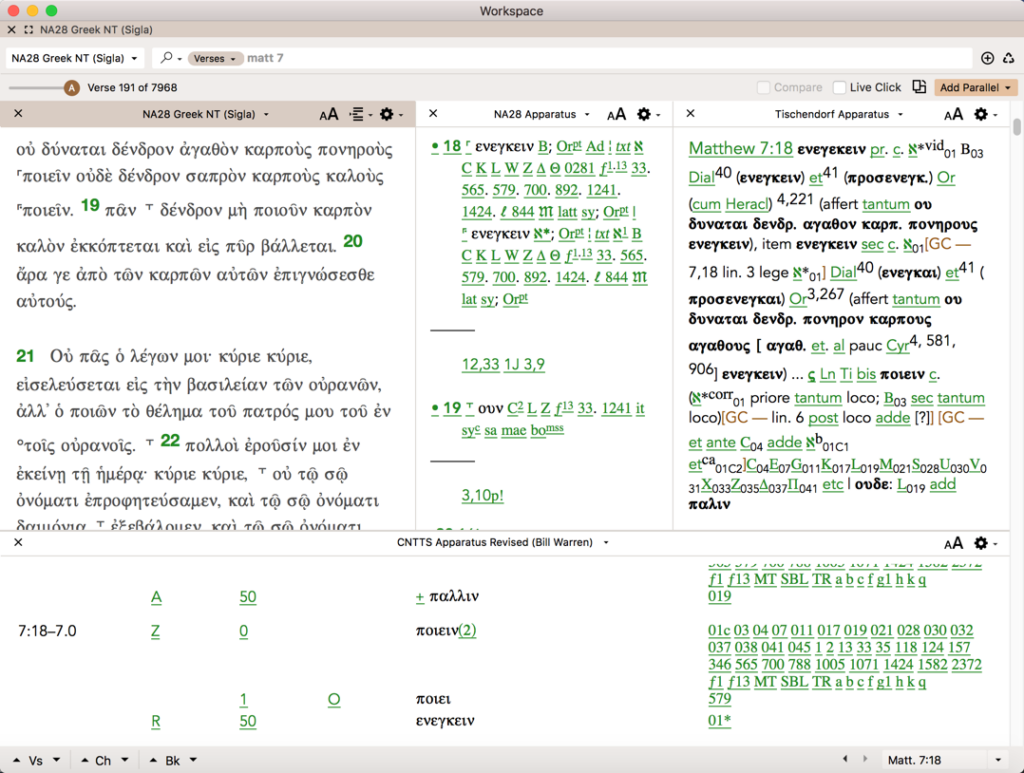 What is a critical apparatus?
What is a critical apparatus?
The term “critical apparatus” refers to the set of notes and variant readings that give reason for the text that has been chosen by the editor(s) of a Hebrew or Greek Bible. It is the basis behind what is deemed to be the closest version to the original biblical manuscripts — no longer extant. But it is also the raw data that enables every reader to undertake their own research and reach their own conclusion as to the relative strengths and weaknesses of the readings adopted in any particular original language edition and/or translation based on it.
These different readings are attested in thousands of manuscripts, early versions, and, in the case of the New Testament, patristic citations and lectionaries. Therefore, sources and differences are usually noted in a highly abbreviated format, thus enabling a huge amount of material to be crammed into a short amount of space.
 How important is a critical apparatus?
How important is a critical apparatus?
A critical apparatus is a critically important tool for any serious student of the Bible. We should dispel the notion that this is the kind of ground only scholars can tread on. Nothing could be further from the truth. Informed laypeople, students, ministers, translators, and professors alike can greatly benefit from a thoughtful use of the different critical apparatuses available. More than that, they should all make a point of using them as part of their regular workflow.
Establishing the proper wording and boundaries of the text we are going to read, study, preach, translate, or teach, is the first step — and arguably one of the most important ones — in any careful and honest attempt to come to grips with the Jewish and Christian Scriptures.
 The advantages of an electronic critical apparatus
The advantages of an electronic critical apparatus
By its very nature, a critical apparatus is a very complex piece of work. It is chock full of abbreviations, cross-references, specialized symbols, and so on. Quite understandably, until recent times it was very slow and laborious to work one’s way through a critical apparatus by hand, except for the occasional look-up here and there. Fortunately, the new digital formats, coupled with the flexibility of hyperlinking texts, and the ability to perform powerful, compound searches, has opened the door to a whole new way of using and researching this incredibly useful data.
It was in this context that David C. Parker, in his article The Text of the New Testament and Computers: The International Greek New Testament Project (Literary & Linguistic Computing, 15 [April 2000], pp. 27-41), asserted the following: “Even though the goal of any major critical edition should continue to be a paper edition, it will be worth scholars’ while to develop computer-based resources.”
 Critical apparatuses available in Accordance
Critical apparatuses available in Accordance
Accordance Bible Software offers a great deal of quality and quantity in the area of critical apparatuses.
This is Constantin von Tischendorf’s greatest work. His editio octava critica maior (1869-1872) has stood the test of time, and it is, still today, a very valuable tool for text critical studies. Tischendorf’s name became associated with Codex Ephraemi (C) and, particularly, Codex Sinaiticus (Aleph). He is known to have been directly involved in the discovery and publication of more than twenty uncial manuscripts.
Tischendorf was able to include in his apparatus all the textual evidence from the manuscripts, versions, and early Church Fathers known to him at the time, and his work stands out for its completeness and reliability.
The Accordance edition comprises his Greek New Testament (GNT-TIS) — greatly enhanced with the addition of punctuation and diacritics (by Rex A. Koivisto), as well as morphological tagging derived from William D. Mounce and modified by Rex A. Koivisto –, and massive textual apparatus (Tischendorf), edited by George C. Yale. It does also include all the corrections penned by Caspar Renatus Gregory in the Prolegomena (vol III). These appear enclosed in red square brackets and preceded by the initials GC.
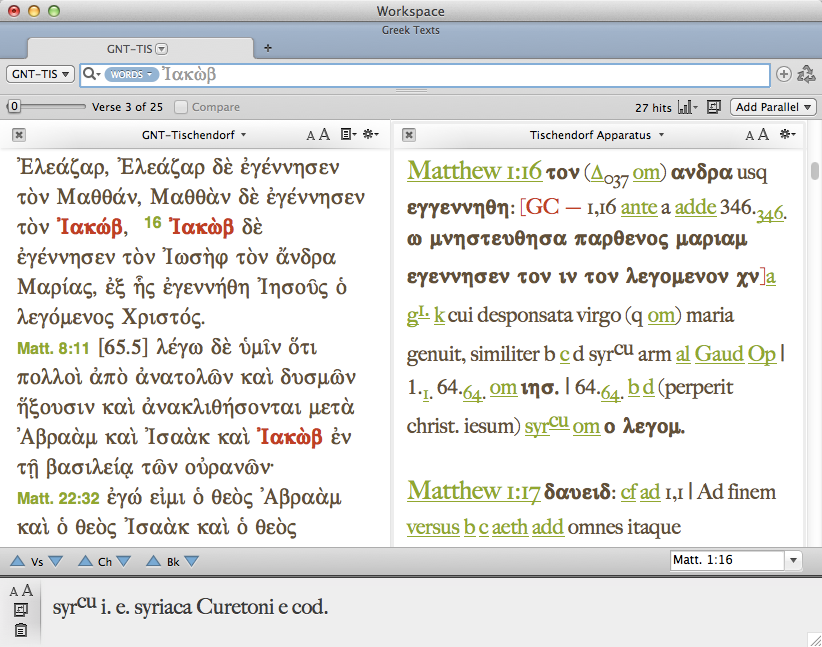
As one would expect, this module is thoroughly hypertexted, and broken down into up to fifteen different search fields (see below). This allows Accordance to display a lot of useful information in the Instant Details box as one moves the cursor over any manuscript, abbreviation, etc., and to perform searches, even multi-field searches, in an easy and intuitive way.

• CNTTS New Testament Critical Apparatus (Revised)
The Center for New Testament Textual Studies (CNTTS) functions as a research center sponsored by the New Orleans Baptist Theological Seminary (NOBTS). It was set up in 1998, and it is “devoted to the collation and analysis of the New Testament text in the Greek manuscripts.” Collation being, of course, the process of carefully examining NT Greek manuscripts and noting every single place where there is some kind of disagreement among them.
This process of assembling and comparing witnesses is a vital part of textual criticism, and, to that end, CNTTS actively cooperates with the International Greek New Testament Project (IGNTP) and other institutions and individuals working in the field of New Testament textual criticism.
One of the main ongoing projects undertaken by CNTTS is a full NT critical apparatus in electronic format. The apparatus now covers all the New Testament and includes a good number of witnesses for the text, ranging from papyri and uncials, to a selection of minuscules and Old Latin readings. The Accordance module itself includes all the collation work done by CNTTS plus other information derived from sources like Tischendorf, Reuben Swanson, von Soden, and the two volumes published by IGNTP (Luke and John — Vol. I, The Papyri).
CNTTS Apparatus (Revised) can be used alongside any Greek New Testament, although I would always recommend the tagged Greek New Testament NA28 (GNT28-T), which is being aggressively developed and improved by Rex Koivisto, one of OakTree’s associate scholars.
This module is very exhaustive as far as papyri and manuscripts go (it does not include much information on early versions or patristic citations yet), and extremely useful in shedding light into the use of the nomina sacra.
• BHS and NA28 Apparatuses
The critical editions of Biblia Hebraica Stuttgartensia (BHS) and Novum Testamentum Graece (NA28) published by the German Bible Society have established themselves as the de facto standard in the field. They are now offered in electronic format, bundled with a number of other relevant texts and tools.
Each one of these apparatuses is offered with a companion text (BHS-T and NA28-T) displaying all the relevant symbols that refer to the corresponding critical apparatus. As you can see below, BHS-T clearly shows the small Latin letters used as references.
In the Preface to his Understanding BHS: A Manual for the Users of Biblia Hebraica Stuttgartensia (Subsidia biblica 8; Rome: Editrice Pontificio Istituto Biblico, 19902), Reinhard Wonneberger openly admits that “understanding BHS, i.e. the text-critical apparatus of Biblia Hebraica Suttgartensia, is a task by itself.” And what a task it is, particularly for those coming from the field of New Testament Studies! Fortunately, most of the text, sigla, and cross-references contained in the BHS Apparatus are hypertexted in such a way as to minimize the effort. Even page numbers are clearly marked, so that checking the text against the printed version of the apparatus becomes very easy.
It should be noted that neither the references to the Masora nor its content are included in this electronic edition, although qere and ktiv readings can be viewed and searched for when using the morphologically tagged version of BHS (HMT-W4).
Incidentally, some users may find that opening a text pane with Rahlfs’ Septuagint (the tagged LXX1), alongside the Hebrew text and its apparatus is very helpful for Old Testament text-critical studies.
As for the New Testament, the NA28 critical apparatus — unlike UBS5, which was originally designed for the use of Bible translators, and thus focuses on selected passages considered particularly relevant to their task — aims at offering a thorough overview of the variants available to all those engaged in the scholarly study of the New Testament.
It is truly remarkable to see so much information presented in such a condensed manner. This very fact explains why often times, when using the printed version, one has to refer to the Introduction, or the full list of witnesses found in one of the Appendices, in order to make the most out of the data displayed at the bottom of every page. However, with Accordance it is no longer necessary to keep flipping the pages back and forth!
• NET Bible and NET Bible Notes
This project, sponsored by the Biblical Studies Foundation is one of the most exciting developments to have taken place in the area of Bible translation in the last thirty years. Among other interesting features, which we will not go into in this article (more information can be found here), NET Bible includes 60,237 translator’s notes! Many of these notes have to do with translation decisions and grammatical arguments, geographic descriptions, and study notes. But what really makes this Bible stand out from the rest is the full set of text-critical notes: over 1,600 for the OT, and almost 600 for the NT.
The text-critical notes — clearly identified by its initials, “tc” — that appear in the New Testament conform to the NA28 Apparatus and use the very same nomenclature. This means that even those who are not very well-versed in consulting critical apparatuses can benefit greatly by reading, say, NET Notes alongside NA28 Apparatus. Moreover, these notes are written in English rather than Latin, and use a significantly lower number of abbreviations.
Since this is still an ongoing project, further improvements and refinements are to be expected in future editions. Having said that, the next best thing to working with the original language texts and apparatuses is to use these two Accordance modules. This is the reason they have been included in this article.
• Conclusion
As we have tried to show, Accordance Bible Software includes a little bit for everyone. From the more easily accessible apparatus (NET Bible Notes) to the highly scholarly ones (BHS and NA28). From the classic works of the 19th century (Tischendorf) to the most updated collations of manuscripts (CNTTS). There is a wide range of available options for every specific interest and/or need.
The power and flexibility of Accordance, coupled with the top-notch assortment of critical apparatuses, make for a delightful study/research experience. One can only wonder what Tischerdorf et al. could have achieved with tools like this, had they been born in our time!
Article Author: Ruben Gomez
(Updated through October 16, 2020 by Helen Brown, Julie Palmer)


